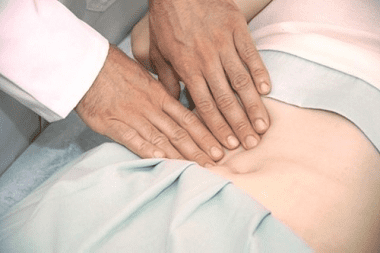Surgery diseases >>>> Umbilical hernia - signs and treatment options
Umbilical hernia - signs and treatment options.

An umbilical hernia is a condition in which the internal organs of the abdomen begin to bulge through the diverging muscles of the umbilical ring.
This is not a critical condition, and in many cases it may not cause a particular inconvenience to a person, only if it is not complicated by an inflammatory process, infringement or an external violation of the aesthetic appearance of the abdomen in the area adjacent to the navel.
The reasons for the development of an umbilical hernia:
- lifting disproportionate weights,
- obesity of the internal organs of the peritoneum,
- pathological weakening of the abdominal muscles,
- attempts at chronic constipation or due to childbirth,
- state of pregnancy,
- ascites,
- tumors with rapid growth.
Signs of an umbilical hernia:
- bulging in the navel, disappearing when taking a horizontal position,
- pain may be absent,
- pain becomes difficult to bear when the umbilical hernia is pinched.
Treatment of an umbilical hernia depends on whether it can be corrected, or the location of the hernia and the presence of adhesions does not provide such an opportunity. In any case, the decision to treat a hernia lies in the field of surgery.
There are currently two ways to solve the problem with an umbilical hernia: placing a patch under the aponeurosis or over the aponeurosis to contain the protruding organs. The best results are obtained by the operation with the placement of a patch under the umbilical ring (under the aponeurosis). With this kind of surgical treatment of an umbilical hernia, there are no complications, and the rehabilitation period is reduced to a month.
If it is not possible to suture too large a discrepancy of the hernial orifice, the patch is placed over the aponeurosis. In this case, the rehabilitation period lasts up to a year and there is a possibility of repeated recurrence of the umbilical hernia.

Read

Read



























